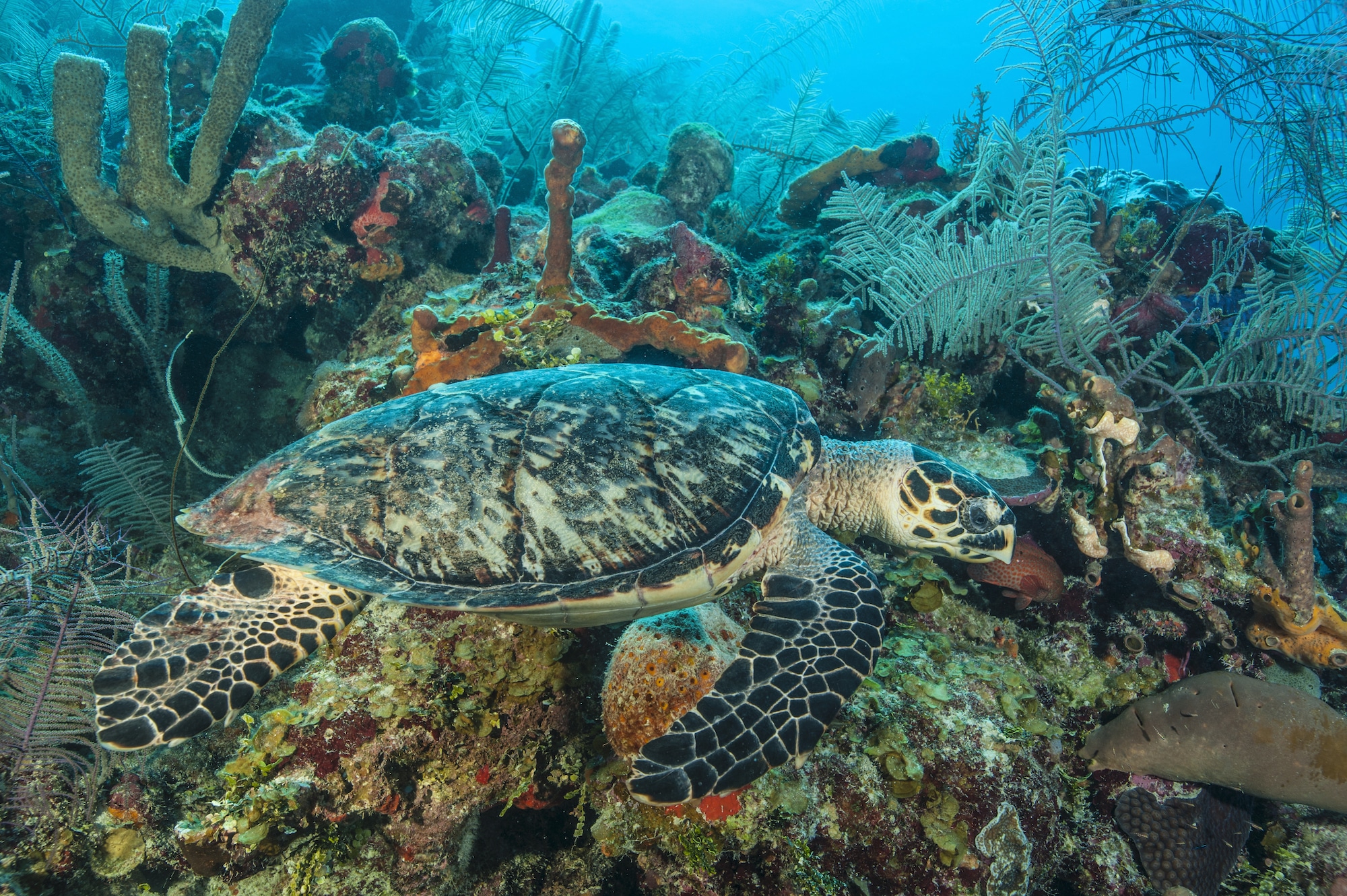Aquatic Habitats and a Detailed Glance on Marine Life
The dynamic world of the oceans comprises a wide range of aquatic habitats that comprise coral reefs and oyster beds and go up to the salt marshes and the varieties of mangroves.
On a wider canvas of the ecosystem, marine life has an immense role in maintaining the perfect balance between species of various forms.
Based on the classification of types, the aquatic habitat is segregated into two parts, marine and freshwater, which vary based on their characteristics.
However, both habitations are crucial in striking a perfect balance in the environment and supporting other races.
In this article, we will dive deep into the significance of both the forms and the importance of the land in complementing and supporting the aquatic habitat.
But before diving deep into the details, we will first hit the basics of marine life to get the idea in the best possible terms. So, without any further ado, let’s get started.
What is an Aquatic Habitat
The Aquatic habitat can be defined in multiple ways, but the two most basic and established explanations are in the section below.
The water areas are inhabited by fish species and other aquatic organisms alongside the nearby land regions that have vegetation.
The land is an essential component in the entire scenario as it provides the essential resource of food, shelter, shade, and, most importantly, security to all aquatic organisms.
Apart from that, another way to define the aquatic habitat is that all the water atmosphere’s physical, chemical, and biological entities combine to form this habitat.
We are talking about the varieties of water bodies, including reservoirs, clear lakes, rivers, ponds, wetlands, and other such entities. In that case, it forms the perfect example of an aquatic habitat.
Varieties of Aquatic Habitation
Being two wings of the same classification, the two varieties, freshwater and marine, differ greatly in the characteristics that make the basis of the animals’ living.
So, without further delay, let’s look at the two varieties and what sets them apart.
1. Freshwater Aquatic Habitation
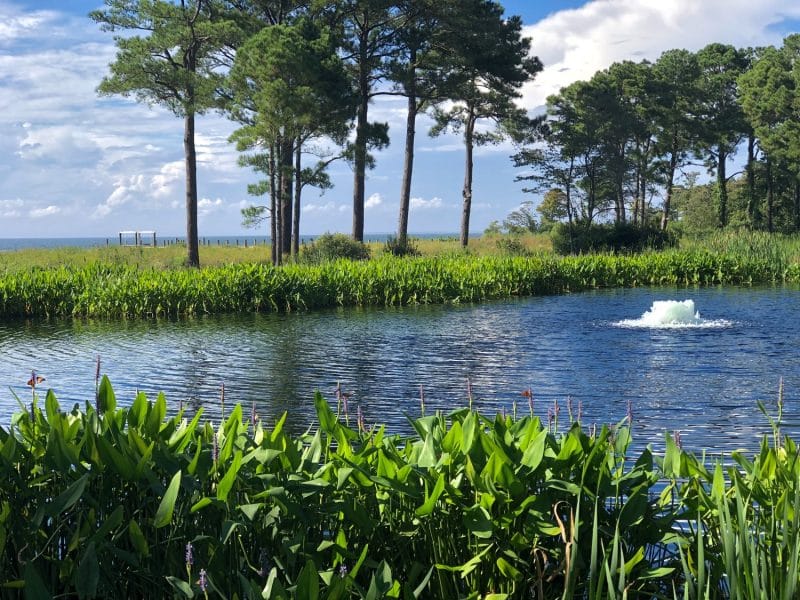
The name itself is self-explanatory and provides detailed clarity of what it stands for.
Freshwater habitats have lower salinity levels and barely make up even one percent of the saltiness. Freshwater bodies include lakes, swamps, streams, rivers, ponds, lagoons, bogs, and wetlands.
A freshwater habitation can be regarded as a vibrant ecosystem and home to diverse species, which include fish, plants, and invertebrates.
One of the essential components and requirements that make up freshwater habitation is the requirement of balanced, clean water, proper pH, the perfect temperature, and natural filtration, which is essential to thrive.
The human population around them ensures the health and biodiversity of the habitation by undertaking regular maintenance since they are equally dependent on them.
2. Marine Aquatic Habitation
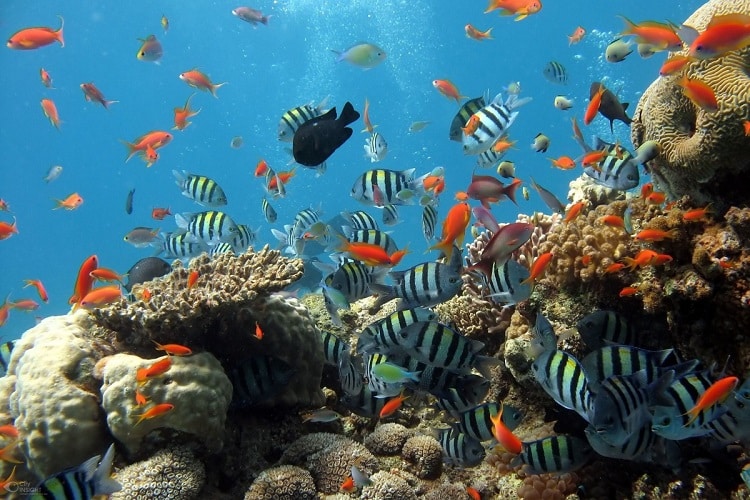
Far from the freshwater system, the marine aquatic habitation is rich in higher salinity levels. All the water habitats that have more than one percent saltiness fall under the category of marine habitation.
The prime examples in this category include seas, oceans, and coral reefs.
However, it is important to note that a few types of water bodies can’t be classified as marine or freshwater habitats.
A few aquatic habitats are formed in the manner of a complete blend or make up the combination of fresh and saltwater habitats.
Examples of such habitats include salt marshes, mangroves, and mud flats.
This brings us to the end of the basic idea of the types of aquatic habitats. Let us now get into the details and explore the various types of the two varieties.
Types of Freshwater Aquatic Habitation
The nature of any aquatic ecosystem depends on the deposits from the land ecosystem. At the same time, the freshwater ecosystem holds negligible amount of salt content.
The prominent example, as previously detailed, comprises rivers, ponds, and streams, among others.
However, as far as the varieties it is concerned, the freshwater ecosystem has three major types, which are as follows:
- Lentic Habitation or The Standing Water Ecosystem
- Lotic Habitation or The Moving Water Ecosystem
- Swamps and Wetlands
Now, with the basic ideas sorted, let us dive deep into the differentiation and take an insight into the three of them.
1. Lentic Habitation
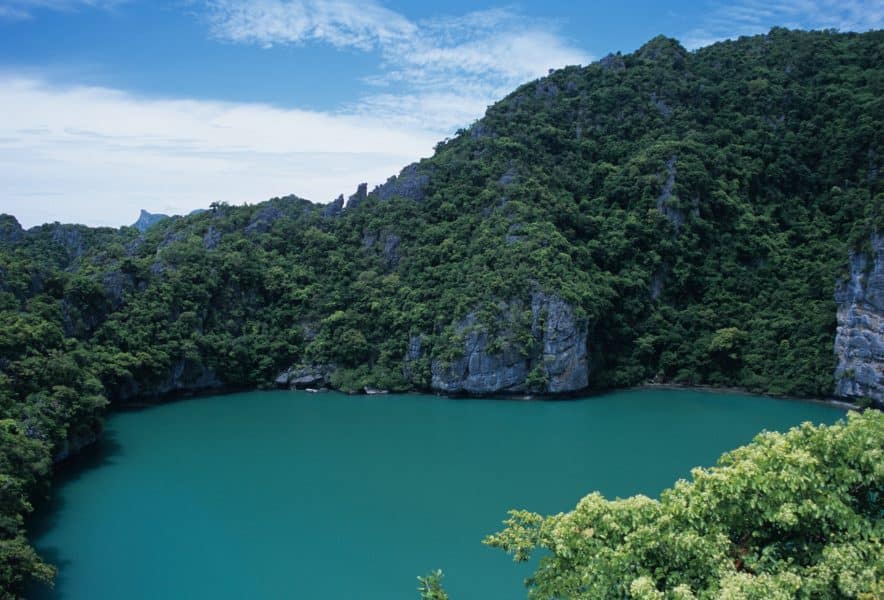
A lentic habitation is made up of land depressions that are filled with standing water. Based on where it is, the lentic environment has different characteristics and depths.
Various plants, like lilies and lotuses, can thrive in the ecosystem due to freshwater availability.
The essential function of the aquatic ecosystem is to create a balanced environment. The living and the non-living things stay in perfect sync and complement each other.
They are rich in flora and fauna; some prominent examples of living organisms that comprise the essential part of the habitat include crabs, frogs, snakes, reptiles, and insects.
And interestingly, all of them form an essential component of the food chain for the food cycle that balances the ecosystem.
2. Lotic Habitation
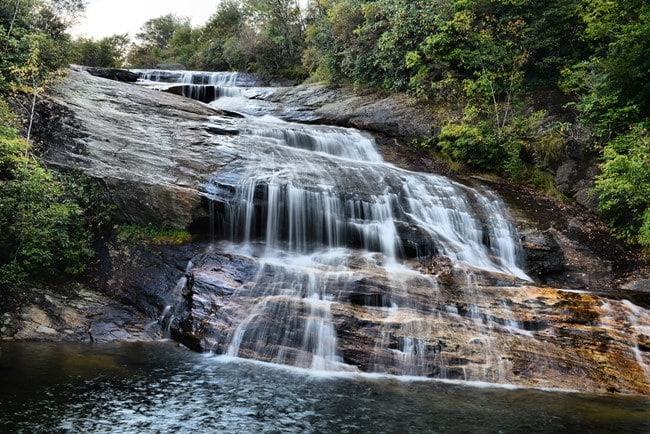
The motion is always there because the water flow in these bodies is only one way.
With the change in the movement of water, the nutrients and the overall characteristics of the ecosystem also change.
It must be noted that the change in the velocity and depth of watermarks impacts the life cycle of living things.
The prime purpose of the river is to carry excess water from the land to the ocean. Therefore, in the entire process, the microbes and plants in the flowing water establish an ecosystem.
Plants and microscopic critters are in the swift water, while larger living things and dense vegetation are found in the slower-moving waters.
3. Wetlands or Marshlands
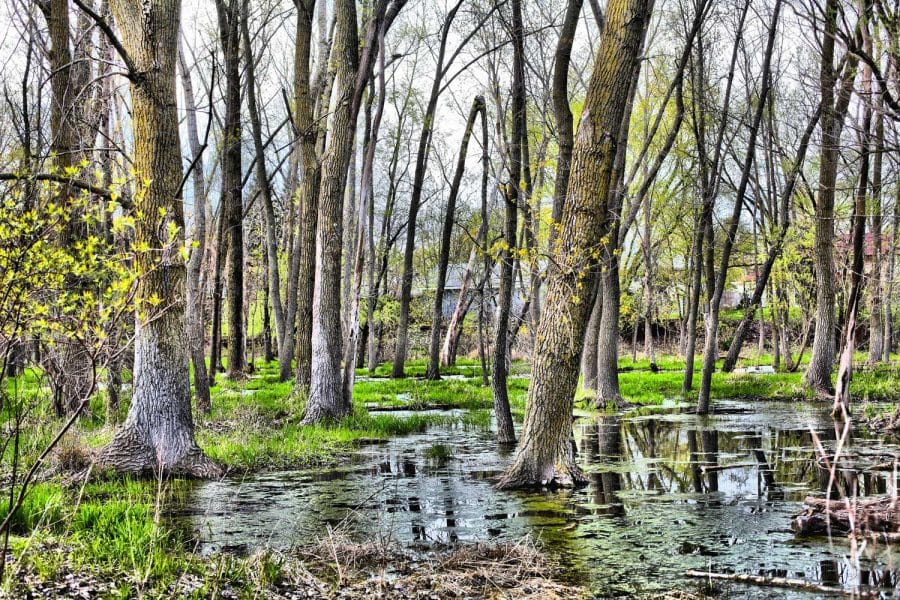
Wetlands and swamps are water-saturated land areas that hold stagnant water; the best example is mangroves.
The major constituent of the wetland is fresh or coastal water, predominantly depending upon the source of the water.
Types of Marine Ecosystems
As detailed earlier, the salt contained in the water is high, while the flora and fauna of this ecosystem depend upon the ability to survive.
Among various plant species, algae and coral reefs are found in a huge number. In marine life, the function of the aquatic ecosystem is to support ideal salinity.
However, as far as the varieties it is concerned, the marine ecosystem has three major types, which are as follows:
- Ocean Habitation
- Estuaries Habitation
- Coastal Habitation
Now, with the basic ideas sorted, let us dive deep into the differentiation and take an insight into the three of them.
1. Ocean Aquatic Habitation
The ocean, with its ultra-huge variety, forms the ocean ecosystem. The ocean aquatic habitat is the biggest among all the other aquatic types.
There are 5 oceans on earth: Pacific, Indian, Atlantic, Arctic, and Southern in which the Pacific forms the largest globally. Sharks, Dolphins, Whales, Turtles, etc form part of the ecosystem.
2. Estuaries Aquatic Habitation
The zone where the sea and river meet the sea and river is called the estuary. The ecosystem in this region holds a massive amount of mineral deposits.
The regions must withstand the water velocity for its essential growth, while the high sedimentation helps support the best possible growth of the plants and microorganisms in the region.
3. Coastal Aquatic Habitation
The region that is the meeting point of the sea and the land is called the coast. Generally, it is the common zone shared by the habitation on the land and sea.
Among the prominent plants and wildlife in the region are crabs, snails, lobsters, turtles, and a wide range of fishes.
Features and Functions of the Aquatic Habitat
Now, with the basic details and types of the aquatic habitat, let’s dive into its features and functions.
Functions
The overall environmental well-being through the contribution of aquatic ecosystems is boundless. But some of the functions that are immensely significant for the environment include:
- Giving Ideal living conditions for aquatic animals
- Recycling the nutrient quotient
- Regulate the flow of water
- Controlling Floods
- Recharging groundwater
Apart from that, several other factors combine to make the living organism’s survival effortless.
Features
The aquatic habitation is the hub for the livelihood of the thousands of plants and wildlife, among which thousands still live in the mystery.
The functionality of marine life is immensely important for the survival of the living species on the land as well.
There are plenty of features that work in the complete synchronization to make things work for human beings as well, but some of the key features that deal with the overall balance are listed below:
1. Dominating Water Habitat
Aquatic is synonymous with water and the survival of each living being in it. There is no possibility of life without water.
When the water surface meets the atmosphere, an extremely small fraction of air is in the ecosystem.
2. Lack of Sunlight Penetration
Light intensity varies inside the water body, where the deeper levels don’t receive light.
It is due to the variation in the depth beneath various locations so that the sunlight couldn’t pave its way down to the bottom surface of the sea or ocean.
3. Constraint of Extreme Temperature
The extreme temperature difference in the aquatic ecosystem is almost null.
The temperature remains constant due to the unavailability of the external sun rays or winds reaching the surface.
Aquatic Habitat and The Importance of Survival
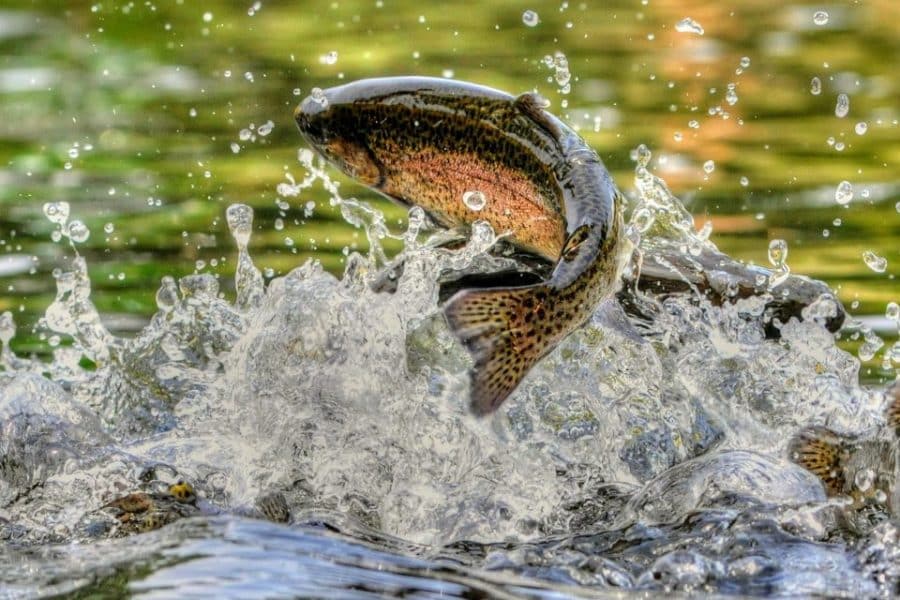
Based on the magnitude and the importance of survival, water has the largest and biggest role to play more than any other factor.
It has been serving the purpose of survival for centuries in terms of its environmental value.
The Aquatic Habitat, since time immemorial, has provided a healthy and fulfilling habitat for the procreation of wildlife as well as supporting the human population on land.
Apart from that, water has a significant role in recycling the water nutrients, bringing down disasters such as floods, purifying toxic chemicals, and nullifying them in the water itself.
The presence of water habitat maintains the flow of water streams but also helps amplify it.
Crises Associated with Aquatic Habitat
No single factor has led to the aquatic habitat’s catastrophic devastation to the extent it currently stands.
Several factors have affected these habitats. The most important comes from the pollutants that enter the water bodies through groundwater, upstream rivers, and precipitation.
Pollution by the residents living around the water body is another major factor behind water pollution.
Some of the major direct pollutants responsible for it include chemicals, oils, discharge of untreated sewage waste, and other human-made discharge pollution.
The constant depleting level of water also acts as a major threat to the environment, eventually leading to a rise in the overall temperature of the water.
Other amenities for the hike include concentrated pollutants, decreasing oxygen levels, droughts for a longer period, and the hindrance in the flow of the fish habitats.
Plenty of other factors cause such devastation, including acid precipitation, disturbance in the bank vegetation, and the degradation of the fish habitat caused by the pollutants.
These factors, all in total, play a role in depleting the aquatic habitat and are hindering the balance of the ecosystem in the wake of the development of mankind.
Above all, climate change on the planet plays a massive role in the threat caused to aquatic habitats.
The Catastrophe of Plastic in The Aquatic Habitat
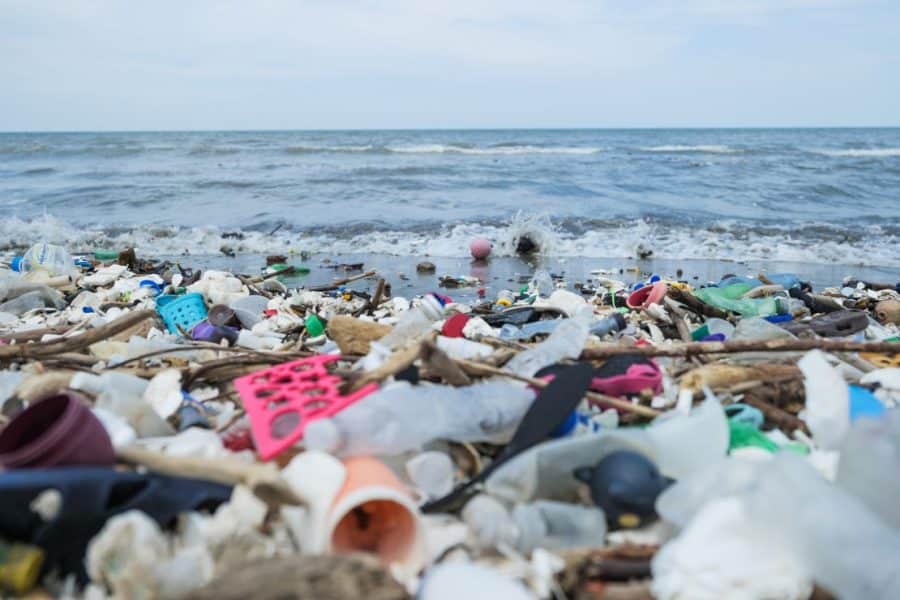
Plastic alone has devasted the ecological balance to a threatening mark. The oceans across the globe are adversely affected by “polluted smog.”
Based on a study conducted over the analysis of decades of long reports from 1979 to 2019 that includes 12,000 sampling points across the globe, it found a whopping 171 trillion of plastic particles.
Cumulatively, all of this weighs 2.3 million tons, and the adverse result is that the data has spiked on an unprecedented scale after 2005.
In the years-long study, the researchers found that most plastic waste in the oceans was swept into rivers by rain, wind, overflowing, or littering.
Once the plastic is dumped into the ocean, it doesn’t decompose but gets broken down into pieces.
Ultimately, it can lead to environmental disasters. Marine life gets badly entangled in plastic or mistakes it for food.
The disposal of plastic into the ocean is not just an environmental concern. Rather, it is a catastrophic climate concern.
The researchers also noted that the key ingredient for most plastics is fossil fuel, which keeps producing plant-heating pollution for the rest of their lives from production to disposal.
What Role Can You Play in Averting This Crisis?
In the wake of the above draconian aspects and environmental threats that eventually affect human life, it is extremely important to consider what is essential to safeguard aquatic habitats and complement nature.
Overall, it calls for a planned and collective action that needs our deliberate and cautious steps; there is the essential urge to implement conservation strategies to protect the resources from further depletion.
- A few essential measures go in a planned manner and need your attention, as detailed below.
- Restore the natural habitats that have undergone degradation.
- Measures to restore the declined species.
- Plant more and more trees to prevent the erosion of soil.
- Pollutant discharge into the water bodies needs to be prevented.
- An essential requirement is to implement government-based programs to safeguard biodiversity.
- Pass mandatory regulation over the discharge of wastewater into the environment of aquatic habitats.
- Enhance the awareness related to the protection of wildlife.
Final Words
All sorts of water bodies, including reservoirs, streams, lakes, ponds, and estuaries, comprise the home and an important aspect of the aquatic habitat.
And all of it together homes an extraordinary collection of living communities. The condition of the environment and the limitations make up the life of the flora and fauna.
As clearly detailed, the survival of living beings depends upon the nonliving elements or the abiotic components.
And with that given, it becomes our responsibility to protect it. The ecosystem of which we are part is an extremely fragile entity.
Currently, it is constantly polluted by terrestrial deposits. If not treated properly, the chemicals and the toxic elements deteriorate the life of the water bodies, causing irreparable and irreversible loss to the ecosystem.
With the constant depletion of aquatic habitats, we must safeguard them and maintain the balance for a healthy ecosystem.
The aquatic habitats, all in total, hold great relevance in upholding nature’s balance. It becomes our responsibility to make subtle arrangements for a fresh, clean, and healthy earth to make our planet a safe and secure place to live in.

